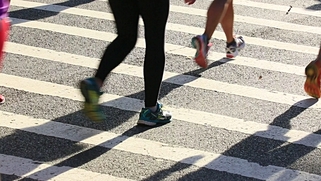 Most people know that if, God forbid, you are out jogging, cycling or walking legally and are hit by a car, you would have a strong claim against the driver and his/her insurance company. What most people don’t know is that, despite laws requiring pedestrians to follow basic traffic laws like using crosswalk signals, etc. if you are ever hit by a car when out of compliance with such laws, the driver may still be “at fault” and his or her insurance may cover any injuries you suffer. This is because in Washington drivers are expected to “lookout” for pedestrians at all times. The law recognizes that pedestrians are vulnerable, and drivers must exercise due care to avoid striking runners and walkers. It is not uncommon for pedestrians, especially runners, to put themselves at risk. They might take calculated risks of crossing streets when traffic appears light, or proceeding through an intersection even though their walk sign is very stale. Even though the law requires pedestrians to use crosswalks, cross before it times out, and to avoid crossing at uncontrolled areas of the road, if a car contacts the pedestrian, the law still scrutinizes the driver. That’s not to say runners shouldn’t be careful. All pedestrians have a duty to avoid creating surprises and hazards for drivers. For example, running into a roadway from behind a view-blocking hedge near a street corner is always a bad idea. On the other hand, if you are running and decide it is safe to cross a street (even if you don’t have the right of way), the law is on your side if the driver simply isn’t paying attention. In other words, even though the law requires pedestrians to use crosswalks and cross them in a timely fashion, if a car contacts the pedestrian, the question will be, “was the driver on the lookout for people who might be on the road?” The lookout doctrine was created to protect runners and other pedestrians. Because drivers are expected to be on the constant lookout for hazards, including runners, in many situations the law will hold the driver responsible at least in part, despite risky pedestrian behavior. In court, the parties argue over what percent each of the parties were at fault. In fact, the doctrine is called “comparative fault.” This article should not be taken as a license to increase your risky behavior while training but it’s important that if you or someone you know is injured, there may be a claim. Of course, the law will be applied equally, so this article should also serve as a reminder to all of us to be on the “lookout” when we are behind the wheel. Lance Hester is a lawyer for the Hester Law Group, one of RTB's sponsors.. The Hester Law Group covers cases dealing with Personal Injuries, Criminal Defense and DUI's. Find more on them HERE. Comments are closed.
|
Raise the BarRace reports, upcoming events, news, and more, from RTB. Archives
September 2023
|
 RSS Feed
RSS Feed




